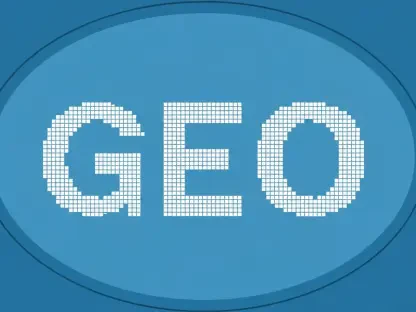In a landmark decision, Judge Leonie Brinkema delivered a nuanced verdict in the Department of Justice’s antitrust case against Google, stirring debate across the ad tech industry. The judgment acknowledged Google’s past acquisitions of DoubleClick and Admeld as non-anticompetitive. However, it found the company culpable of illegal tying and monopolization within the ad server and ad exchange domains. This legal reasoning exposes Google’s practices to scrutiny, bringing into question the competitive dynamics of digital advertising. The decision hinges on a controversial definition of “open web display” advertising, narrowly excluding advertising within vast networks and platforms such as Facebook, Amazon, mobile apps, and non-display formats like video, all while overlooking significant shifts in ad spending trends.
Legal Reasoning and Market Implications
Narrow Market Definition
A central issue in Judge Brinkema’s ruling is the acceptance of a limited market definition that potentially undermines the diversity of digital advertising spaces. The DOJ’s narrow interpretation focuses solely on “open web display” advertising, discarding the burgeoning sectors that include mobile apps and the closed ecosystems of digital giants like Amazon and Facebook. This oversight challenges the reality wherein mobile apps constituted a staggering 55 percent of display ad expenditures in 2022 alone. Critics argue this definition does not accurately portray the complex landscape of digital ads, ultimately influencing how monopolistic power is assessed and stifling potential innovation.
Monopolization Accusations
Despite acknowledging Google as a robust player in the ad tech ecosystem, critics emphasize that mere market dominance does not equate to monopolistic conduct unless genuinely anticompetitive actions are demonstrated. The ruling falters in effectively applying standards pertinent to monopolization cases; herein lies criticism of its reliance on “tying” rather than examining practices such as “self-preferencing” or refusal to deal. It is vital to recognize that real-time access to Google’s AdX is not an ordinary consumer service but a strategic technological choice. Hence, even if tying were evident, it should not equate to monopolization in a sector functioning as a transaction platform, mirroring the Supreme Court’s Amex decision for wider market implications.
Google’s Technological Position
Rationale Behind Google’s Practices
Under scrutiny is Judge Brinkema’s dismissal of Google’s technological defenses that underpin its strategic operations. With restricting real-time access seen as preventive measures against competitors exploiting innovative tech investments, Google’s justifications become significant. The company has demonstrated an ability to enhance digital advertising substantially, now reaching $137 billion in display ad expenditures, a meteoric rise from the $18 billion witnessed at the time of DoubleClick’s acquisition. Through innovation, Google appears less of a monopolizer and more as a force advancing industry-wide capabilities, creating value not just for advertisers but broadening the ecosystem.
Implications for Future Innovation
The ruling casts doubt on Google’s potential to further innovate in ad tech, posing a threat to its legacy as a leader in tech progress. Compelling Google towards possible divestiture or restructuring within its ad technology framework may inadvertently hinder America’s competitive edge in emerging tech landscapes amidst mounting global competition, particularly from China. Rather than being an outright victory in antitrust enforcement, the judgment signifies a formidable challenge to those steering technological innovation.
Outcome of the Judicial Decision
Assessment of Impact
The antitrust ruling against Google is poised to have far-reaching consequences, extending beyond the immediate legal landscape. By challenging the very foundations that sustain digital advertising growth, the decision could impact how future innovations in technology are approached, redefining the boundaries of competitive practices. The verdict highlights the disconnect between legal interpretations and dynamic market realities, emphasizing the necessity of careful examination when assessing antitrust violations. At its core, this case underscores the need for evolving legal frameworks to keep pace with technology’s rapid transformation.
Future Prospects
A central concern in Judge Brinkema’s decision is her acceptance of a narrow market definition that risks neglecting the diverse nature of digital advertising spaces. The Department of Justice’s constricted view zooms in exclusively on “open web display” ads, disregarding the rapidly growing sectors that encompass mobile applications and the closed ecosystems of digital titans like Amazon and Facebook. This oversight proves problematic, given that mobile apps alone represented a whopping 55% of display ad spending in 2022. Critics argue this definition fails to adequately represent the intricate digital advertising landscape, which ultimately impacts evaluations of monopolistic tendencies and hampers potential innovation. Such a narrow scope may significantly limit how promotional power is assessed, suggesting a need for broader consideration in the digital advertising realm to accurately reflect its complexities and growth opportunities.









